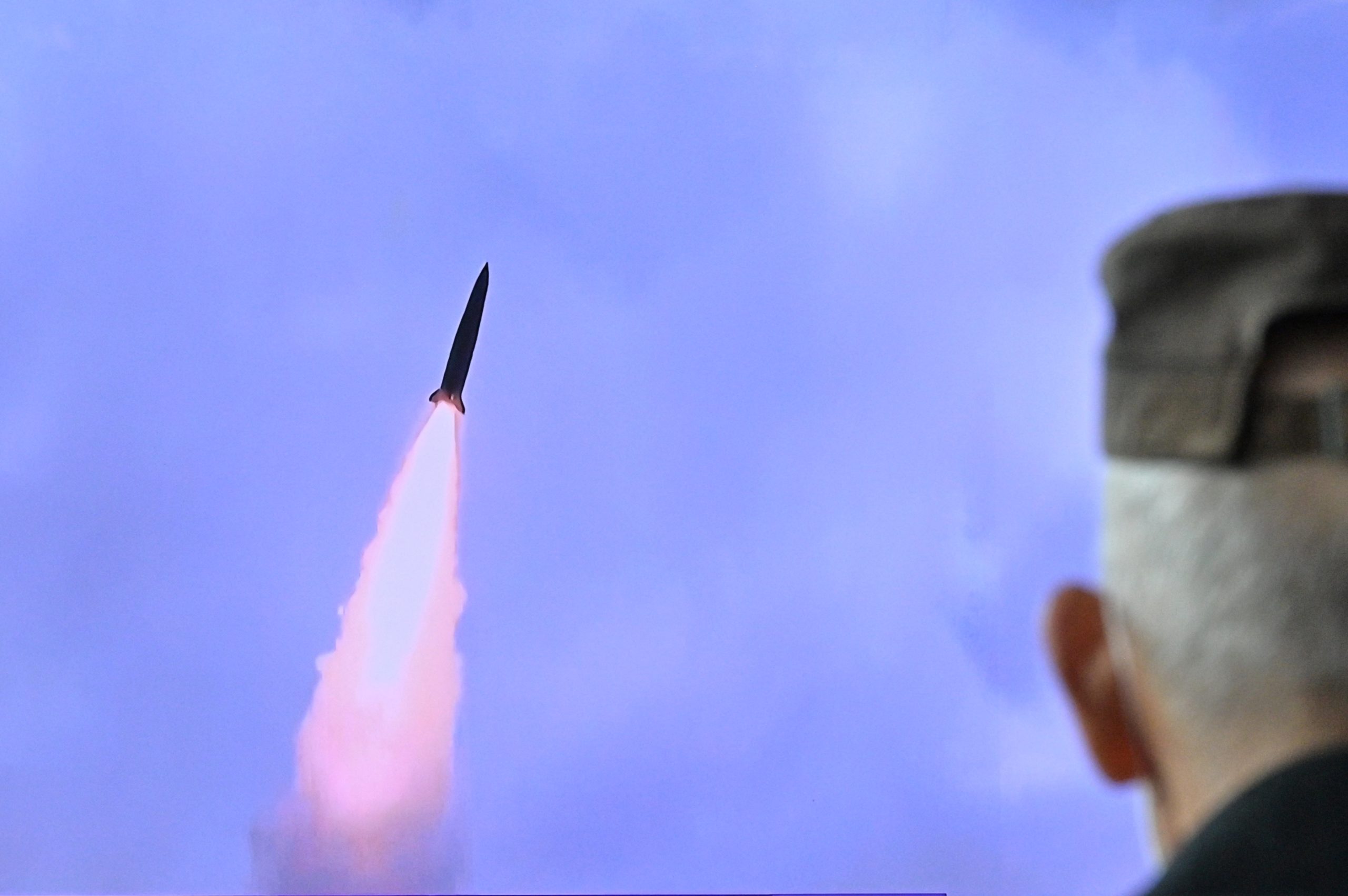N. Korea fires suspected submarine-launched ballistic missile — Seoul

A man watches a television report showing a news broadcast with file footage of a North Korean missile test, at a railway station in Seoul on October 19, 2021, after the South’s military said a North Korean weapons test was believed to be a submarine-launched ballistic missile. (Photo by Anthony WALLACE / AFP)
SEOUL — North Korea fired a suspected submarine-launched ballistic missile into the sea on Tuesday, the South’s military said, in Pyongyang’s latest advance in weapons technology and one that could give it a second-strike capability.
The test came as both Koreas were building up their weapons capabilities in what could become an arms race on the peninsula, and with Washington-Pyongyang dialogue at a standstill.
The “short-range ballistic missile suspected to be an SLBM” was fired from Sinpo into the sea east of the peninsula, Seoul’s Joint Chiefs of Staff said in a statement.
Sinpo is a major naval shipyard, where satellite photographs previously showed submarines.
The statement added: “South Korean and US intelligence are closely analyzing for additional detail.”
Article continues after this advertisementThe key question will be whether it was fired from a working submarine, an underwater platform, or a barge.
Article continues after this advertisementA proven submarine-based missile capability would take the North’s arsenal to a new level, allowing deployment far beyond the Korean peninsula and a second-strike capability in the event of an attack on its military bases.
Washington, Seoul, and Tokyo condemned the launch, with all three describing it as a ballistic missile.
The White House stressed that the action was a threat that only underscored the “urgent” need for dialogue with Pyongyang, but also highlighted its “ironclad” commitment to help defend South Korea and Japan.
Under sanctions
North Korea is banned from developing nuclear weapons and ballistic missiles under UN Security Council resolutions and is subject to multiple sets of sanctions as a result.
Pyongyang is known to be developing an SLBM and has carried out two underwater launches in 2016 and 2019, although the Pentagon and analysts say those were likely to have been fired from a submerged platform with the system in its early stages.
“The Kim (Jong Un) regime is developing submarine-launched ballistic missiles because it wants a more survivable nuclear deterrent able to blackmail its neighbors and the United States,” said Leif-Eric Easley, a professor at Ewha University in Seoul.
“North Korea’s SLBM is probably far from being operationally deployed with a nuclear warhead,” he said, “but Kim cannot politically afford appearing to fall behind in a regional arms race.”
The missile traveled around 590 kilometers (365 miles) at a maximum altitude of about 60 kilometers, an informed source told AFP.
For its part, South Korea last month tested its first SLBM, which put it among the elite group of nations that have demonstrated proven technology and also unveiled a supersonic cruise missile.
‘Deep regret’
Tuesday’s launch comes after North Korea — which invaded its neighbor in 1950 — in recent weeks tested a long-range cruise missile, a train-launched weapon, and what it said was a hypersonic warhead, sparking global concern.
It also mounted a rare weapons exhibition, showcasing the gigantic intercontinental ballistic missile (ICBM) revealed last year.
Pyongyang says it needs its arsenal to defend against possible US invasion.
Opening the weapons exhibition, leader Kim Jong Un — who has overseen rapid progress in the North’s military technology — blamed Washington for tensions, dismissing US assertions that it does not have hostile intentions.
“The fundamental reason for the North’s provocation is because the US is not changing its position on talks,” Shin Beom-chul, a researcher at the Korea Research Institute for National Strategy, told AFP.
“Pyongyang is trying to demonstrate that it can carry out a bigger provocation.”
South Korea’s National Security Council convened an emergency meeting over Tuesday’s launch, expressing “deep regret” and urging Pyongyang to return to dialogue.
White House spokeswoman Jen Psaki similarly called for talks with North Korea, telling a press briefing: “Our offer remains to meet anywhere, anytime, without preconditions.”
Talks at standstill
Pyongyang’s latest move came as US Director of National Intelligence Avril Haines was in Seoul for a three-way meeting Tuesday with her South Korean and Japanese counterparts on North Korea, according to reports.
South Korean President Moon Jae-in is pressing for a formal declaration that the Korean War is over — hostilities ceased in 1953 with an armistice rather than a peace treaty — before his term ends next year.
Kim met three times with former US President Donald Trump, who boasted of stopping a war but failed to reach an agreement on ending North Korea’s nuclear program.
Talks essentially stalled after a Kim-Trump summit in Hanoi collapsed in 2019.